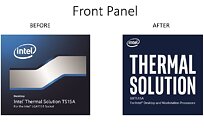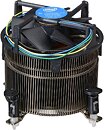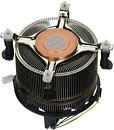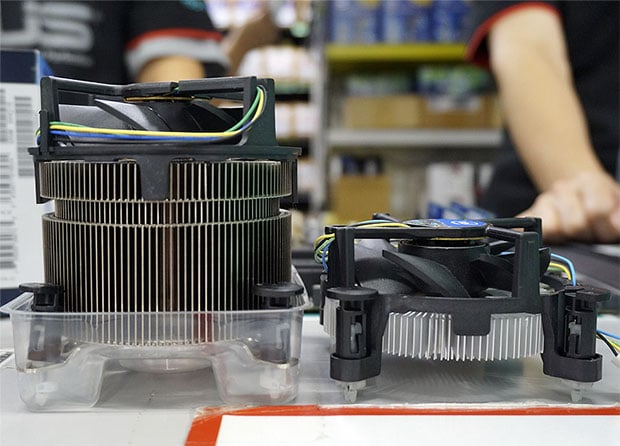- Joined
- Oct 9, 2007
- Messages
- 47,849 (7.39/day)
- Location
- Dublin, Ireland
| System Name | RBMK-1000 |
|---|---|
| Processor | AMD Ryzen 7 5700G |
| Motherboard | Gigabyte B550 AORUS Elite V2 |
| Cooling | DeepCool Gammax L240 V2 |
| Memory | 2x 16GB DDR4-3200 |
| Video Card(s) | Galax RTX 4070 Ti EX |
| Storage | Samsung 990 1TB |
| Display(s) | BenQ 1440p 60 Hz 27-inch |
| Case | Corsair Carbide 100R |
| Audio Device(s) | ASUS SupremeFX S1220A |
| Power Supply | Cooler Master MWE Gold 650W |
| Mouse | ASUS ROG Strix Impact |
| Keyboard | Gamdias Hermes E2 |
| Software | Windows 11 Pro |
Intel sells a beefed up sibling of its stock heatsink-fan separately in the DIY retail channel, called the Thermal Solution TS15A, which was originally released when Intel launched its LGA115x socket. With the new LGA1200 socket retaining cooler compatibility with LGA115x, Intel issued a PCN (product change notification) apprising its retail supply chain that a newer batch of the cooler will come with updated packaging to reflect that the cooler supports LGA1200 in addition to LGA1151. The TS15A features a copper core making contact with the processor's IHS at the base, from which aluminium fins project radially. A high power fan ventilates the cooler axially, while the cooler's design spreads some of the air onto the CPU VRM and memory.





View at TechPowerUp Main Site





View at TechPowerUp Main Site









